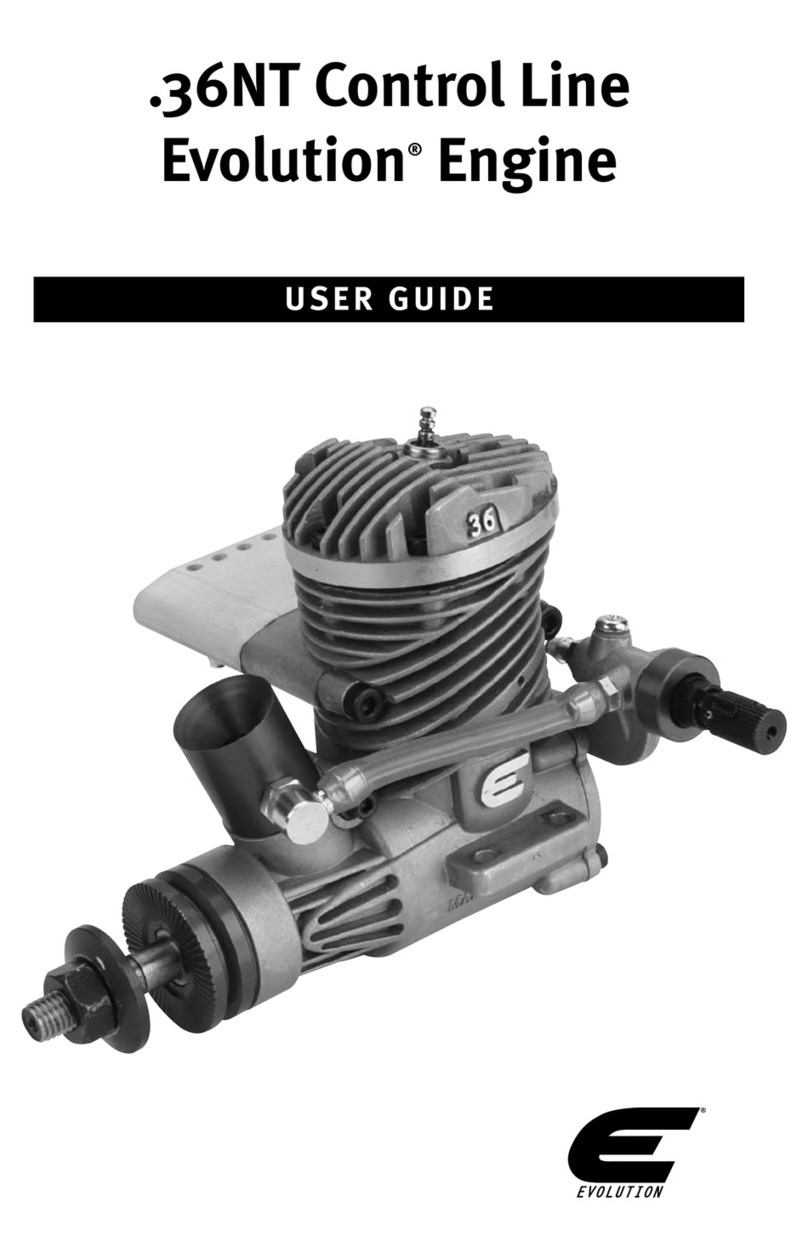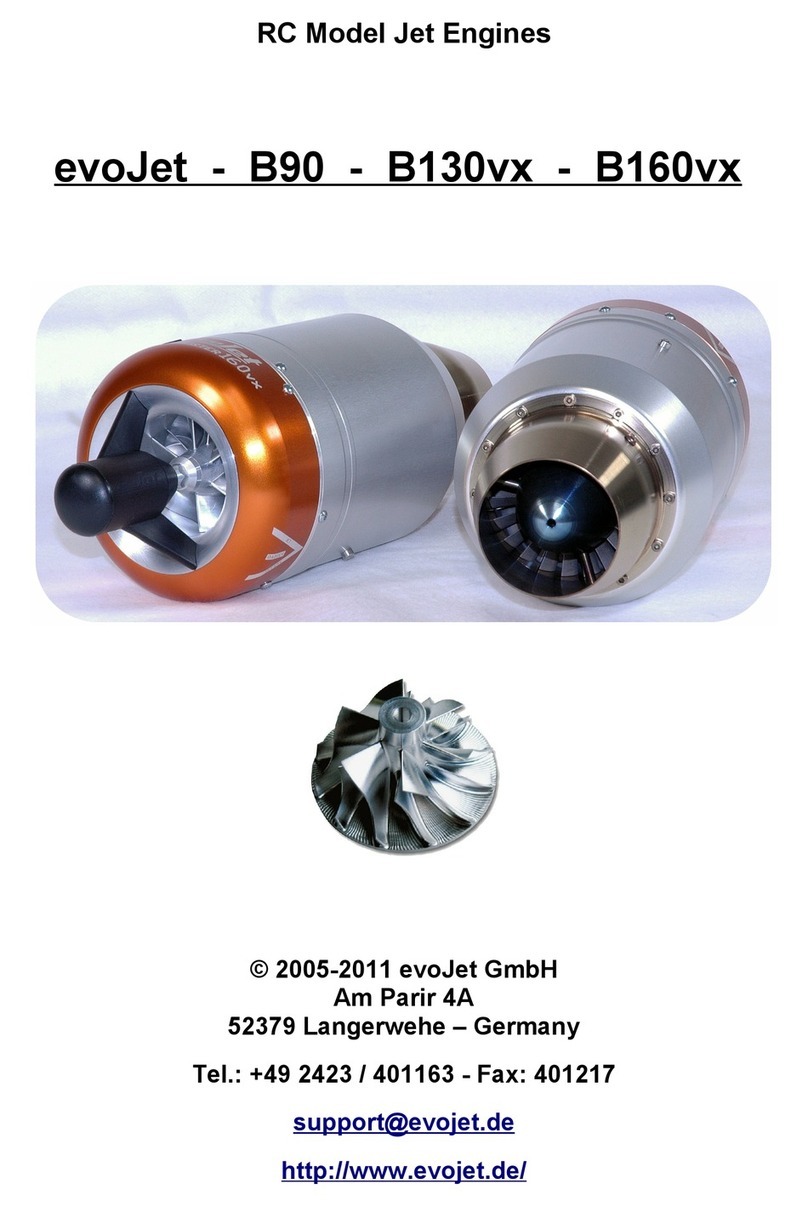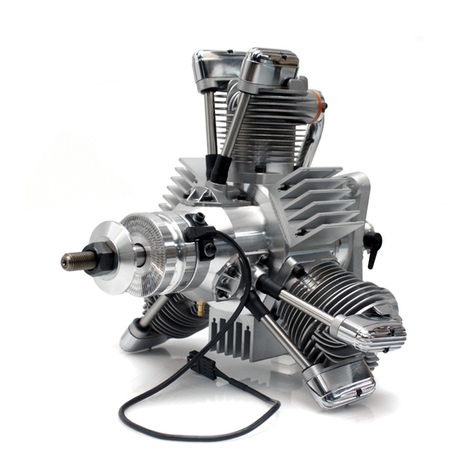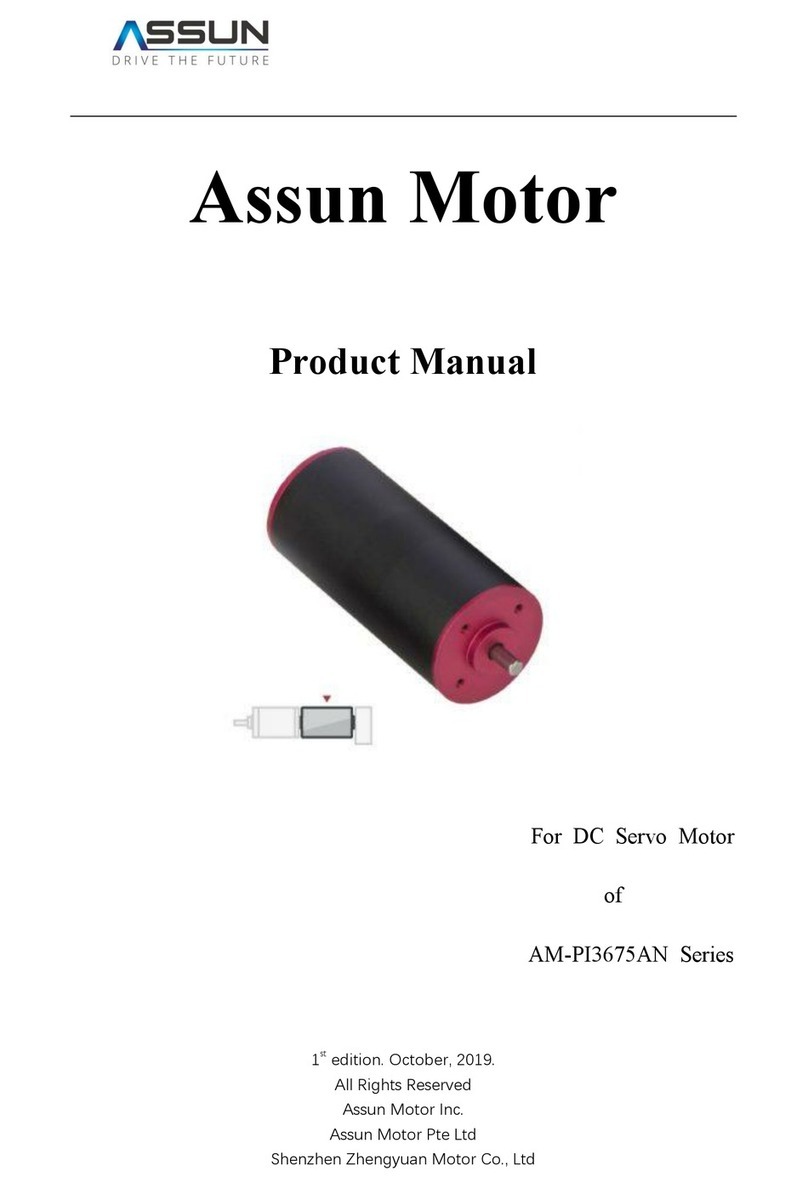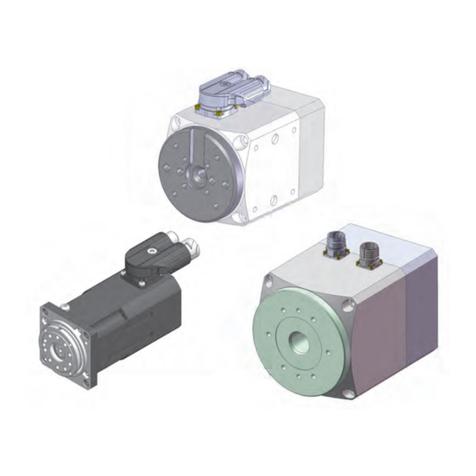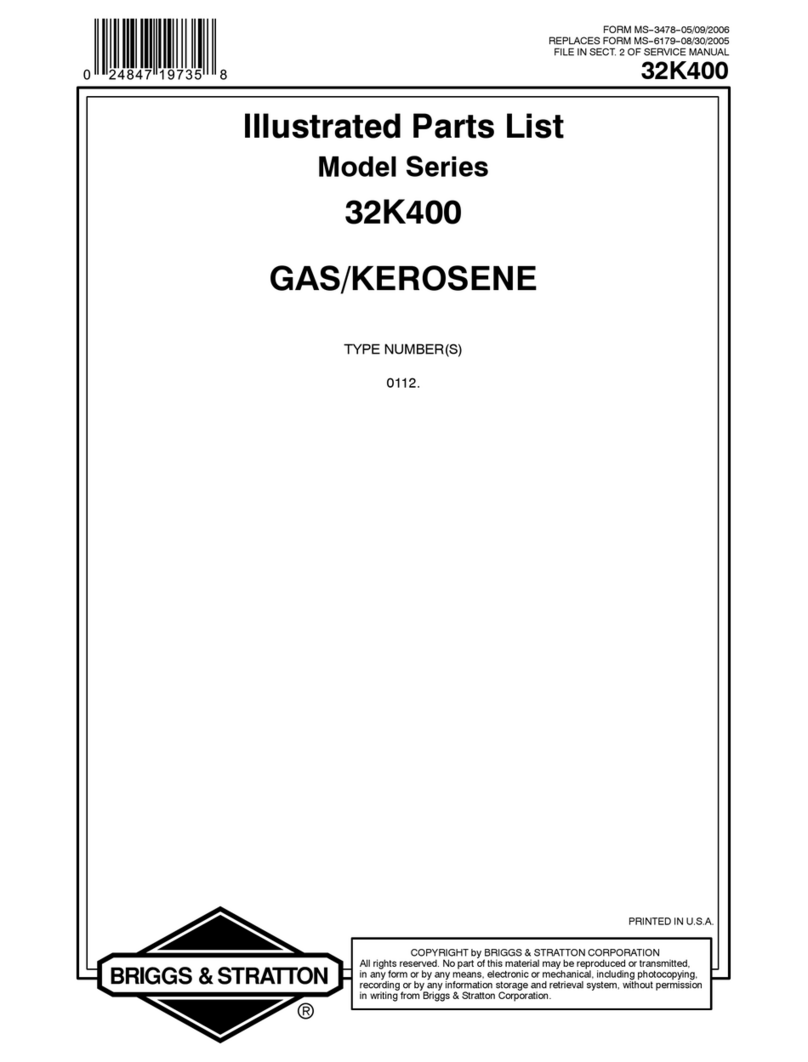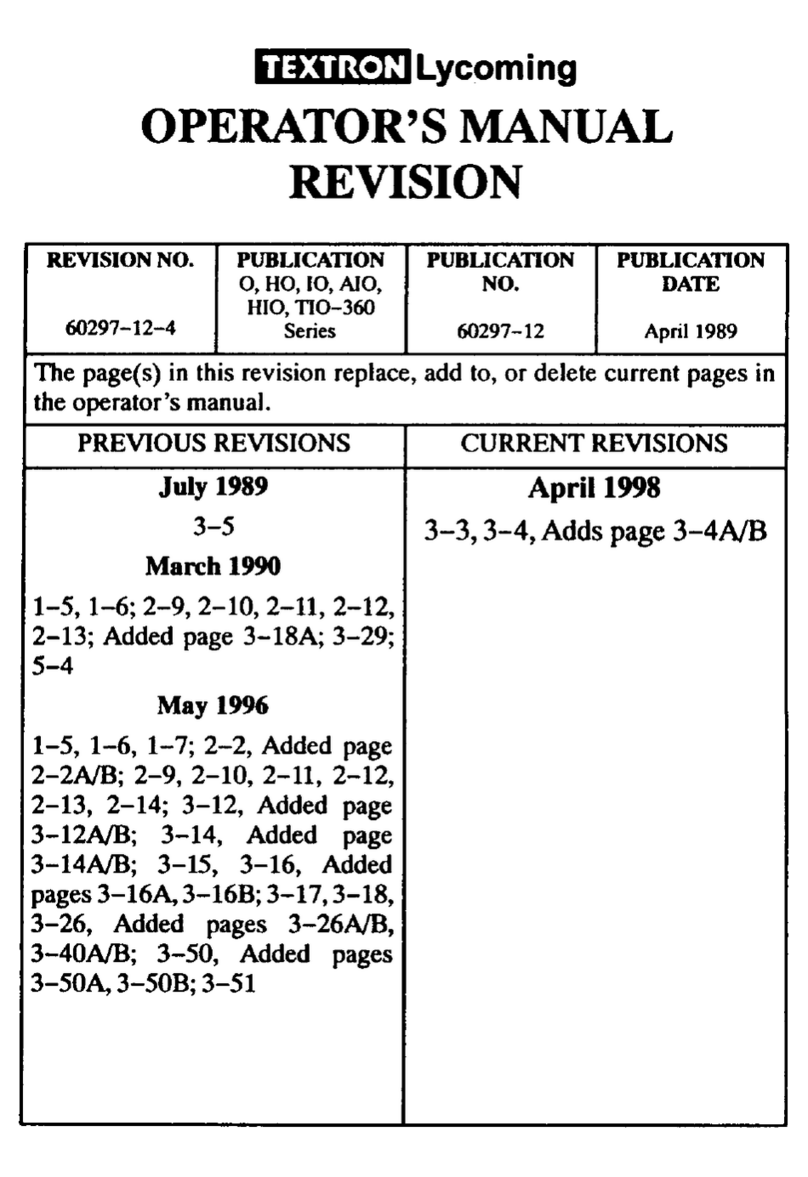DETROIT MBE 900 User manual

DDC-SVC-MAN-0207
EuroV MBE 900 Operators Manual
Specifications are subject to change without notice. Detroit Diesel Corporation is registered to ISO 9001:2001.
Copyright © Detroit Diesel Corporation. All rights reserved. Detroit Diesel Corporation is a Daimler company.
Printed in U.S.A.

Table of Contents
1 Forward.................................................................................................................................................................................... 4
1.1 Introduction..................................................................................................................................................................... 4
1.2 Non-Genuine and Rebuilt Component Quality Alert...................................................................................................... 4
1.3 Personnel Requirements.................................................................................................................................................. 4
1.4 Engine Conversions and Modifications.......................................................................................................................... 4
1.5 Acronyms and Abbreviations.......................................................................................................................................... 4
2 To the Operator....................................................................................................................................................................... 6
2.1 To the Operator................................................................................................................................................................ 6
3 Caution Summary................................................................................................................................................................... 7
3.1 Caution Summary............................................................................................................................................................ 7
4 First Time Start Preparations.............................................................................................................................................. 13
4.1 System Checks.............................................................................................................................................................. 13
4.2 Starting the Engine........................................................................................................................................................ 15
4.3 Cold Weather Operation................................................................................................................................................ 16
5 Detroit Diesel Electronic Control System Operation......................................................................................................... 17
5.1 Detroit Diesel Electronic Control System Operation.................................................................................................... 17
6 Detroit Diesel Electronic Control System Features............................................................................................................ 19
6.1 Changing the Idle Speed............................................................................................................................................... 19
6.2 Stop Engine Override Option........................................................................................................................................ 19
6.3 Engine Protection.......................................................................................................................................................... 19
7 Engine Systems...................................................................................................................................................................... 20
7.1 Engine Systems............................................................................................................................................................. 20
8 EuroV MBE900 Aftertreatment System............................................................................................................................. 21
8.1 EuroV MBE900 Aftertreatment System....................................................................................................................... 21
9 Diesel Exhaust Fluid Information........................................................................................................................................ 22
9.1 Diesel Exhaust Fluid Information................................................................................................................................. 22
10 Diesel Exhaust Fluid Tank.................................................................................................................................................. 23
10.1 Diesel Exhaust Fluid Tank.......................................................................................................................................... 23
11 Aftertreatment Maintenance.............................................................................................................................................. 24
12 Instrument Panel Lamps.................................................................................................................................................... 25
13 Diesel Exhaust Fluid Level Warning Lamps..................................................................................................................... 27
13.1 Diesel Exhaust Fluid Level Warning Lamps............................................................................................................... 27
14 Maintenance......................................................................................................................................................................... 28
14.1 MBE 900 EuroV Preventive Maintenance Tables - 93K222(CK-4) and 93K218(CJ-4)............................................ 28
14.2 Scheduled Intervals..................................................................................................................................................... 29
14.3 Schedule Use............................................................................................................................................................... 30
14.4 Required Maintenance Operations.............................................................................................................................. 30
14.5 Fuel Prefilter Element Cleaning.................................................................................................................................. 34
14.6 Main Fuel Filter Element Changing............................................................................................................................ 36
14.7 Engine Oil and Filter Changing.................................................................................................................................. 37
14.8 Coolant Concentration Checking................................................................................................................................ 41
14.9 Coolant Flushing and Changing.................................................................................................................................. 42
14.10 Cooling System Inspecting........................................................................................................................................ 43
15 How to Procedures............................................................................................................................................................... 45
15.1 How to Select Lubricating Oil.................................................................................................................................... 45
15.2 How to Replace the Lubricating Oil and Oil Filter..................................................................................................... 45
15.3 How to Select Diesel Fuel........................................................................................................................................... 48
15.4 Engine Out of Fuel – How to Restart.......................................................................................................................... 49
15.5 How to Clean an Engine.............................................................................................................................................. 50
15.6 Cleaning/Flushing the Cooling System....................................................................................................................... 51
15.7 Coolant Selections and Maintenance.......................................................................................................................... 51
15.8 Coolant Fill Options.................................................................................................................................................... 52
15.9 Coolant Do's and Don'ts.............................................................................................................................................. 53
15.10 Maintenance.............................................................................................................................................................. 54
Table of Contents
2 All information subject to change without notice.
Copyright © 2019 DETROIT DIESEL CORPORATION DDC-SVC-MAN-0207

15.11 Appendix A - Definitions.......................................................................................................................................... 56
15.12 Appendix B - General Coolant Information.............................................................................................................. 57
15.13 Appendix C - Detroit™ Cooling System Maintenance Products.............................................................................. 59
15.14 Checking the Hoses................................................................................................................................................... 60
15.15 How to Service the Dry Type Air Cleaner................................................................................................................ 61
16 Detroit Genuine Coolanat Engine Products...................................................................................................................... 62
16.1 Detroit Genuine Coolant Engine Products.................................................................................................................. 62
17 Engine Oil Capacities.......................................................................................................................................................... 64
17.1 Engine Oil Capacities - EuroV.................................................................................................................................... 64
EuroV MBE 900 Operators Manual
All information subject to change without notice. 3
DDC-SVC-MAN-0207 Copyright © 2019 DETROIT DIESEL CORPORATION

1 Forward
1.1 Introduction
This manual is intended for use by the operator of a Detroit™ engine used in On-Highway Vehicle applications.
1.2 Non-Genuine and Rebuilt Component Quality Alert
Maintenance procedures must be followed in order to continue satisfactory engine performance and durability and to ensure
engine coverage under the manufacturer's warranty. Many of these maintenance procedures ensure that the engine complies
with applicable emissions standards. Proper maintenance procedures, using specific components engineered to comply with
emissions regulations, may be performed by an authorized Detroit™ distributor or dealer, an independent outlet or the
operator / owner. The owner is responsible for determining the suitability of components to maintain emissions compliance
during the engine's useful emission life.
Detroit™ cautions that the indiscriminate rebuilding of precision components, without the benefit of specifications,
specialized equipment, and knowledge of the electronic operating system, will jeopardize performance or lead to more
serious problems, and can take the engine outside of emissions standards.
There are several other components in an engine, such as turbocharger, that are specifically designed and manufactured to
exacting standards for emissions compliance. It is important that these components, if replaced, modified or substituted, can
be verified to ensure that the engine remains in compliance with emissions standards. The use of inadequately engineered,
manufactured or tested components in repair or rebuild of the engine may be in violation of emissions standards regulations.
Furthermore, modern engines exhibit operating parameters which require the use of proper fluids, such as fuel, coolant and
lubricating oil, to maintain long engine life. The use of fluids that do not meet Detroit™ specifications may result in
premature wear or engine failure.
1.3 Personnel Requirements
Work on the engine should be carried out only by skilled technicians who have been instructed in the specific skills necessary
for the type of work being performed.
1.4 Engine Conversions and Modifications
The function and safety of the engine could be affected if unauthorized modifications are made to it. Detroit™ will not accept
responsibility for any resulting damage.
Tampering with the fuel injection system and engine electronics could also affect engine power output or exhaust emission
levels. Compliance with the manufacturer's settings and with statutory environmental protection regulations cannot then be
guaranteed.
1.5 Acronyms and Abbreviations
Table 1.
Acronyms and Abbreviations
ATF Automatic Transmission Fluid mMeter
CAC Charge Air Cooler MCM Motor Control Module
CAN Controller Area Network MIL Malfunction Indicator Lamp
CARB California Air Resources Board mpg Miles per Gallon
1 Forward
4 All information subject to change without notice.
Copyright © 2019 DETROIT DIESEL CORPORATION DDC-SVC-MAN-0207

Acronyms and Abbreviations
CEL Check Engine Light mph Miles per Hour
CPC Common Powertrain Controller NOAT Nitrited Organic Acid Technology
DDC Detroit Diesel Corporation NOx Nitrogen Oxide
DDEC Detroit Diesel Electronic Controls OAT Organic Acid Technology
DTC Diagnostic Trouble Code OBD On Board Diagnostic
ECM Electronic Control Module OEM Original Equipment Manufacturer
ECT Engine Coolant Temperature oz Ounce
EGR Exhaust Gas Recirculation psi Pounds per Square Inch
ELC Extended Life Coolant PTO Power Takeoff
EPA Environmental Protection Agency qt Quart
FMCSA Federal Motor Carrier Safety Administration rpm Revolutions per Minute
GAWR Gross Axle Weight Rating SAE Society of Automotive Engineers
GVWR Gross Vehicle Weight Rating SCA Supplemental Coolant Additive
HEST High Exhaust System Temperature SCR Selective Catalyst Reduction
in. Inch SEL Stop Engine Light
inH2O Inches of Water SEO Stop Engine Override
inHg Inches of Mercury S/N Serial Number
ISO International Organization for Standardization SRS Synchronous Reference Sensor
kKilo (1000) SRT Standard Repair Time
kg Kilogram TCM Transmission Control Module
km Kilometer TDC Top Dead Center
km/h Kilometers per Hour TPS Throttle Position Sensor
kPa Kilopascal TRS Timing Reference Sensor
kW Kilowatt VIN Vehicle Identification Number
LLiter VSG Variable Speed Governor
lb Pound VSS Variable Speed Sensor
EuroV MBE 900 Operators Manual
All information subject to change without notice. 5
DDC-SVC-MAN-0207 Copyright © 2019 DETROIT DIESEL CORPORATION

2 To the Operator
2.1 To the Operator
This manual contains instructions on the safe operation and preventive maintenance of your Detroit™ engine used in vehicle
applications. Maintenance instructions cover routine engine services such as lubricating oil and filter changes in enough
detail to permit self-servicing, if desired.
The operator should become familiar with the contents of this manual before operating the engine or carrying out
maintenance procedures.
Power-driven equipment is only as safe as the person operating the controls. You are urged, as the operator of this diesel
engine, to keep fingers and clothing away from the revolving belts, drive shafts, and pulleys on the engine installation.
Throughout this manual CAUTIONS and WARNINGS regarding personal safety and NOTICES regarding engine
performance or service life will appear. To avoid personal injury and ensure long engine service life, always heed these
instructions.
Whenever possible, it will benefit you to rely on an authorized Detroit™ service outlet for all your service needs from
maintenance to major parts replacement. Authorized service outlets worldwide stock factory-original parts.
The information and specifications in this publication are based on the information in effect at the time of approval for
printing. Contact an authorized Detroit™ service outlet for information on the latest revision. The right is reserved to make
changes at any time without obligation.
Detroit™ engines are built in accordance with sound technological principles and based on state-of-the-art technology.
Despite this, the engine may constitute a risk of damage to property or injury to persons if it is not used for its intended
purpose.
The engine should not be modified or converted in an incorrect manner or the safety instructions included in this manual
disregarded.
Keep this Operator Manual with the engine installation at all times. It contains important operating, maintenance,
and safety instructions.
NOTICE: Failure to maintain the cooling system at required concentrations will result in severe damage to
the engine cooling system and related components. Refer to the "Coolant Selections and Maintenance"
section.
Table 2.
WARRANTY
The applicable engine warranty is contained in the booklet “Warranty Information for Detroit™ Engines,” available from authorized Detroit™
service outlets.
Trademark Information
DDC®, Detroit™, DDEC®, Optimized Idle®, Diagnostic Link®, BlueTec®, POWER Trac®, POWER COOL®, and
POWER GUARD® are registered trademarks of Detroit Diesel Corporation. All other trademarks used are the property of
their respective owners.
2 To the Operator
6 All information subject to change without notice.
Copyright © 2019 DETROIT DIESEL CORPORATION DDC-SVC-MAN-0207

3 Caution Summary
3.1 Caution Summary
The following cautions must be observed by the operator of the vehicle or equipment in which this engine is installed and/or
by those performing basic engine preventive maintenance. Failure to read and heed these cautions and exercise reasonable
care for personal safety and the safety of others when operating the vehicle/equipment or performing basic engine preventive
maintenance may result in personal injury and engine and/or vehicle/equipment damage.
Engine Operation
Observe the following cautions when operating the engine.
WARNING: PERSONAL INJURY
To avoid injury from loss of vehicle/vessel control, the operator of a DDEC equipped engine must
not use or read any diagnostic tool while the vehicle/vessel is moving.
WARNING: HOT EXHAUST
During parked regeneration the exhaust gases will be extremely HOT and could cause a fire if
directed at combustible materials. The vehicle must be parked outside.
CAUTION: LOSS OF VEHICLE CONTROL
To avoid injury from the loss of vehicle control, do not use cruise control under these conditions:
• When it is not possible to keep the vehicle at a constant speed (on winding roads, in heavy
traffic, in traffic that varies in speed, etc.).
• On slippery roads (wet pavement, ice-or snow-covered roads, loose gravel, etc.).
WARNING: PERSONAL INJURY
Diesel engine exhaust and some of its constituents are known to the State of California to cause
cancer, birth defects, and other reproductive harm.
• Always start and operate an engine in a well ventilated area.
• If operating an engine in an enclosed area, vent the exhaust to the outside.
• Do not modify or tamper with the exhaust system or emission control system.
WARNING: PERSONAL INJURY
To avoid injury from engine shutdown in an unsafe situation, ensure the operator knows how to
override the stop engine condition on a DDEC-equipped unit.
EuroV MBE 900 Operators Manual
All information subject to change without notice. 7
DDC-SVC-MAN-0207 Copyright © 2019 DETROIT DIESEL CORPORATION

CAUTION: LOSS OF VEHICLE CONTROL
To avoid injury from loss of vehicle control, do not activate the Engine Brake system under the
following conditions:
• On wet or slippery pavement, unless the vehicle is equipped with ABS (anti-lock braking system)
and you have had prior experience driving under these conditions.
• When driving without a trailer (bobtailing) or pulling an empty trailer.
• If the tractor drive wheels begin to lock or there is fishtail motion after the Engine Brake is
activated, deactivate the brake system immediately if this occurs.
WARNING: BODILY INJURY
To avoid injury from an explosion, do not use ether or starting fluid on engines equipped with a
manifold (grid) heater.
Preventive Maintenance
Observe the following cautions when performing preventive maintenance.
WARNING: PERSONAL INJURY
To avoid injury when working near or on an operating engine, remove loose items of clothing and
jewelry. Tie back or contain long hair that could be caught in any moving part causing injury.
WARNING: PERSONAL INJURY
To avoid injury when working on or near an operating engine, wear protective clothing, eye
protection, and hearing protection.
WARNING: HOT OIL
To avoid injury from hot oil, do not operate the engine with the rocker cover(s) removed.
WARNING: FIRE
To avoid injury from fire, contain and eliminate leaks of flammable fluids as they occur. Failure to
eliminate leaks could result in fire.
CAUTION: USED ENGINE OIL
To avoid injury to skin from contact with the contaminants in used engine oil, wear protective
gloves and apron.
WARNING: PERSONAL INJURY
To avoid injury when using caustic cleaning agents, follow the chemical manufacturers usage,
disposal, and safety instructions.
3 Caution Summary
8 All information subject to change without notice.
Copyright © 2019 DETROIT DIESEL CORPORATION DDC-SVC-MAN-0207

WARNING: PERSONAL INJURY
To avoid injury from hot surfaces, wear protective gloves, or allow engine to cool before removing
any component.
WARNING: PERSONAL INJURY
To avoid injury, use care when working around moving belts and rotating parts on the engine.
WARNING: FIRE
To avoid injury from combustion of heated lubricating-oil vapors, stop the engine immediately if an
oil leak is detected.
WARNING: PERSONAL INJURY
To avoid injury from contact with rotating parts when an engine is operating with the air inlet piping
removed, install an air inlet screen shield over the turbocharger air inlet. The shield prevents
contact with rotating parts.
WARNING: HOT COOLANT
To avoid scalding from the expulsion of hot coolant, never remove the cooling system pressure cap
while the engine is at operating temperature. Wear adequate protective clothing (face shield,
rubber gloves, apron, and boots). Remove the cap slowly to relieve pressure.
WARNING: FIRE
To avoid injury from fire, do not smoke or allow open flames when working on an operating engine.
WARNING: FIRE
To avoid injury from fire from a buildup of volatile vapors, keep the engine area well ventilated
during operation.
WARNING: PERSONAL INJURY
To avoid injury from rotating belts and fans, do not remove and discard safety guards.
WARNING: PERSONAL INJURY
To avoid injury from slipping and falling, immediately clean up any spilled liquids.
EuroV MBE 900 Operators Manual
All information subject to change without notice. 9
DDC-SVC-MAN-0207 Copyright © 2019 DETROIT DIESEL CORPORATION

Compressed Air
Observe the following cautions when using compressed air.
WARNING: EYE INJURY
To avoid injury from flying debris when using compressed air, wear adequate eye protection (face
shield or safety goggles) and do not exceed 276 kPa (40 psi) air pressure.
Cooling System
Observe the following cautions when servicing the cooling system.
WARNING: HOT COOLANT
To avoid scalding from the expulsion of hot coolant, never remove the cooling system pressure cap
while the engine is at operating temperature. Wear adequate protective clothing (face shield,
rubber gloves, apron, and boots). Remove the cap slowly to relieve pressure.
WARNING: PERSONAL INJURY
To avoid injury from slipping and falling, immediately clean up any spilled liquids.
Electrical System
Observe the following cautions when jump starting an engine, charging a battery, or working with the vehicle/application
electrical system.
WARNING: ELECTRICAL SHOCK
To avoid injury from electrical shock, do not touch battery terminals, alternator terminals, or wiring
cables while the engine is operating.
WARNING: Battery Explosion and Acid Burn
To avoid injury from battery explosion or contact with battery acid, work in a well ventilated area,
wear protective clothing, and avoid sparks or flames near the battery. If you come in contact with
battery acid:
• Flush your skin with water.
• Apply baking soda or lime to help neutralize the acid.
• Flush your eyes with water.
• Get medical attention immediately.
WARNING: PERSONAL INJURY
To avoid injury from accidental engine startup while servicing the engine, disconnect/disable the
starting system.
Air Intake System
Observe the following cautions when working on the air intake system.
3 Caution Summary
10 All information subject to change without notice.
Copyright © 2019 DETROIT DIESEL CORPORATION DDC-SVC-MAN-0207

WARNING: PERSONAL INJURY
To avoid injury from hot surfaces, wear protective gloves, or allow engine to cool before removing
any component.
WARNING: PERSONAL INJURY
To avoid injury from contact with rotating parts when an engine is operating with the air inlet piping
removed, install an air inlet screen shield over the turbocharger air inlet. The shield prevents
contact with rotating parts.
Lubricating Oil and Filters
Observe the following cautions when replacing the engine lubricating oil and filter.
WARNING: PERSONAL INJURY
To avoid injury from slipping and falling, immediately clean up any spilled liquids.
WARNING: FIRE
To avoid injury from combustion of heated lubricating-oil vapors, stop the engine immediately if an
oil leak is detected.
WARNING: FIRE
To avoid injury from fire, do not smoke or allow open flames when working on an operating engine.
WARNING: FIRE
To avoid injury from fire from a buildup of volatile vapors, keep the engine area well ventilated
during operation.
Fuel System
Observe the following cautions when fueling the vehicle or working with the fuel system.
WARNING: FIRE
To avoid injury from fire, keep all potential ignition sources away from diesel fuel, including open
flames, sparks, and electrical resistance heating elements. Do not smoke when refueling.
WARNING: PERSONAL INJURY
To prevent the escape of high pressure fuel that can penetrate skin, ensure the engine has been
shut down for a minimum of 10 minutes before servicing any component within the high pressure
circuit. Residual high fuel pressure may be present within the circuit.
EuroV MBE 900 Operators Manual
All information subject to change without notice. 11
DDC-SVC-MAN-0207 Copyright © 2019 DETROIT DIESEL CORPORATION

WARNING: FIRE
To avoid increased risk of a fuel fire, do not mix gasoline and diesel fuel.
WARNING: FIRE
To avoid injury from fire caused by heated diesel-fuel vapors:
• Keep those people who are not directly involved in servicing away from the engine.
• Stop the engine immediately if a fuel leak is detected.
• Do not smoke or allow open flames when working on an operating engine.
• Wear adequate protective clothing (face shield, insulated gloves and apron, etc.).
• To prevent a buildup of potentially volatile vapors, keep the engine area well ventilated during
operation.
Aftertreatment System
Observe the following cautions when servicing the Aftertreatment System (ATS). Be advised that these two labels are
attached to the Aftertreatment Device (ATD).
3 Caution Summary
12 All information subject to change without notice.
Copyright © 2019 DETROIT DIESEL CORPORATION DDC-SVC-MAN-0207

4 First Time Start Preparations
4.1 System Checks
Perform the following system checks before starting.
4.1.1 Checking the Cooling System
Check the cooling system as follows:
1. Make sure all drain cocks in the cooling system are installed (drain cocks are often removed for shipping) and are
closed tightly.
2. Fill the coolant overflow surge tank with Detroit™ Genuine Coolant until coolant level stays between the low and full
coolant marks on the tank.
3. Entrapped air must be purged after filling the cooling system. To do this, allow the engine to warm up with the
pressure cap removed. With the transmission in neutral, increase engine speed to 1000 rpm and add coolant to the
surge tank as required.
4. Check to make sure the front of the radiator and charge air cooler (if equipped) are unblocked and free of debris.
4.1.2 Checking and Monitoring the Oil Level
Check the oil level as follows:
WARNING: PERSONAL INJURY
To avoid injury from slipping and falling, immediately clean up any spilled liquids.
NOTICE: Do not add oil if the oil reading is in the crosshatch area on the dipstick. There are approximately 4.0 L
(4.2 qt) from the fill mark to the full mark. Overfilling the oil pan can cause engine damage.
NOTE: If the engine operating temperature is below 60°C (140°F), the engine must be on a level surface and then
shut down for 60 minutes for an accurate oil level reading. Otherwise, the engine must be brought up to an
operating temperature of 60°C (140°F), parked on a level surface and then shut down for 20 minutes for an
accurate oil level reading.
1. Check the oil level daily with the engine stopped and on a level surface. If the engine has just been stopped and is
warm, wait approximately 20 minutes to allow the oil to drain back into the oil pan before checking.
2. Add oil to maintain the correct level on the dipstick. Use only the heavy-duty oils recommended in the "How to
Replace the Lubricating Oil and Oil Filter" section in this manual.
NOTE: If the dipstick has a positive locking device such as a lever or twist-lock design, this must be disengaged
before pulling the dipstick out of the guide tube.
3. Remove the dipstick from the guide tube. Use a shop rag to wipe off the end of the dipstick.
4. Wait 15 seconds to allow any crankcase pressure to dissipate through the guide tube and let the oil level settle in the
oil pan.
5. Reinstall the dipstick and make sure it is fully inserted into the guide tube.
6. Remove the dipstick and read the oil level dipstick.
7. The figure shows a comparison between the bends on the dipstick and a crosshatch pattern on a conventional dipstick.
Note the exact area noted on the bends. For example, the 'maximum' oil level will be at the BOTTOM of bend (1). For
the 'minimum' oil level, it is noted at the TOP of bend (2). If the oil level is below the 'minimum' bend, add oil to bring
EuroV MBE 900 Operators Manual
All information subject to change without notice. 13
DDC-SVC-MAN-0207 Copyright © 2019 DETROIT DIESEL CORPORATION

it up the 'maximum' level. Do NOT fill beyond the maximum fill level on the dipstick, since overfilling may result in
high oil consumption and possible severe engine damage.
4.1.3 Fuel System Checks
Make sure the fuel shutoff valve (if used) is open. Fill the tanks with the recommended fuel. Keeping tanks full reduces
water condensation and helps keep fuel cool, which is important to engine performance. Full tanks also reduce the chance for
microbe (black slime) growth. For fuel recommendations, Refer to section "How to Select Diesel Fuel".
NOTICE: Prolonged use of the starting motor and engine fuel pumps to prime the fuel system can result in
damage to the starter, fuel pumps, and injectors.
If the shutoff valve is even partially closed, it may cause erratic engine operation due to an inadequate supply of fuel
to the fuel pump.
NOTICE: NEVER use ether as a starting aid to run the engine. Doing so will result in injector damage.
If an external starting aid is used, such as a starting fluid, the heat generated by the external fuel source will cause the injector
tips to be damaged when the fuel cools them. The injector piston and bushing can be scored from running without lubrication.
To ensure prompt starting and even running, the fuel system must be primed if air has entered the fuel system. Priming is
done by operating the manual hand priming pump located on the frame-mounted fuel filter or connecting an external priming
pump to the priming port on the fuel filter module. Authorized Detroit™ service outlets are properly equipped for this type of
service.
Priming is required if the fuel system has been serviced.
Drain off any water that has accumulated. Water in fuel can seriously affect engine performance and may cause engine
damage.
4.1.4 Adding Fuel
When adding fuel, pay attention to the following:
NOTICE: Always use Ultra-Low Sulfur Fuel (ULSF) with 15 PPM sulfur content or less, based on ASTM Standard
D2622 test procedure. Higher sulfur levels will damage the engine Aftertreatment System (ATS).
4 First Time Start Preparations
14 All information subject to change without notice.
Copyright © 2019 DETROIT DIESEL CORPORATION DDC-SVC-MAN-0207

• Add winter or summer grade fuel according to the season of the year.
• Work in the cleanest conditions possible.
• Prevent water from entering the fuel tank.
For further information, Refer to Section "How to Select Diesel Fuel".
4.1.5 Checking Other Engine and ATS Related Parts
Check the engine compartment as follows:
• Make sure the transmission is filled to the proper level with the fluid recommended by the gear manufacturer. Do not
overfill.
• The Diesel Exhaust Fluid (DEF) must be checked and filled regularly with DEF meeting Detroit™ quality specification.
• Make sure cable connections to the storage batteries are clean and tight.
• Check for cracks in the battery cases (1), for tightness of the cable clamps (2) at the terminals, and for corrosion of the
terminals (3). Service or replace as needed.
• To provide corrosion protection, apply dielectric grease liberally to the terminal pads.
4.2 Starting the Engine
1. Place the transmission in neutral, and set the parking brake.
NOTICE: To prevent serious starter motor damage, release the ignition switch immediately after the engine has
started.
2. Turn on the ignition switch.
3. Wait for the engine system indicator lights on the instrument panel to go out.
4. With foot off the accelerator pedal, start the engine.
5. If the engine does not start after 20 seconds, stop. Try again after waiting about 60 seconds.
NOTICE: Do not increase engine speed if the oil pressure gauge indicates no oil pressure. Shut down the engine
within approximately ten seconds to avoid engine damage. Check to determine the cause of the problem.
NOTE: Do not place the engine under full load until it reaches operating temperature. Colder engine temperatures
will cause the engine to preset idle up to 900 rpm. Even at a high idle condition, you do not have to wait for engine
warm up and return to normal idle to drive the truck.
6. Monitor the oil pressure gauge immediately after starting the engine.
EuroV MBE 900 Operators Manual
All information subject to change without notice. 15
DDC-SVC-MAN-0207 Copyright © 2019 DETROIT DIESEL CORPORATION

4.3 Cold Weather Operation
Special precautions must be taken during cold weather. To protect your engine, special cold weather handling is required for
fuel, engine oil, coolant, and batteries.
NOTICE: To avoid engine damage, DO NOT use any type of aerosol spray, e.g., ether, starting fluid or brake
cleaner to aid in starting the engine.
For engines with a grid heater:
WARNING: BODILY INJURY
To avoid injury from an explosion, do not use ether or starting fluid on engines equipped with a
manifold (grid) heater.
Temperatures below -20°C (-4°F) may require a block heater and oil pan heater.
4.3.1 Winter Fronts
Winter fronts on Detroit™ engines are seldom necessary due to the modern design of the engine cooling system. The coolant
thermostat is on the outlet side of the cooling system on the Detroit™ engine and regulates coolant flow to the radiator into
the engine. The thermostat regulates coolant flow to control the temperature of the coolant within the coolant circuit. The
following benefits are a result from regulating the coolant at the inlet temperature side of the engine:
• Reduced thermal cycling of the engine
• Operating temperature is reached faster
• Improved vehicle heating because of better temperature regulation
Further information on the thermostat function may be found in the Coolant Thermostat section of the EuroV MBE900
Workshop Manual (DDC-SVC-MAN-0206).
Use of a winter front on a Detroit™ engine, particularly those that are fully closed, will cause performance issues and is not
recommended on Detroit™ engines. Winter fronts can result in the following:
• Excessive fan run time due to higher Charge Air Cooler (CAC) outlet temperatures resulting from low air flow through the
CAC
• Increased fuel consumption
• Failure of the DEF system heaters to turn on when needed due to incorrect temperature calculations resulting in fault
codes, poor performance of the Aftertreatment System, and power reduction
• Failure of critical emission equipment that will result in vehicle speed inducement to a maximum of 5 mph
Use of a winter front should be avoided as this has been shown to cause false fault codes with the engine and aftertreatment
system. This has also been linked to specific component failures that will cause vehicle downtime and lost productivity.
There are two specific situations where a winter front may be temporarily needed:
• To improve cab heating while idling under extreme cold ambient temperature
• When the ambient temperature remains below -30°C (-22°F) and the engine is unable to maintain running coolant
temperature of 80°C (175°F) during normal over-the-road operation
If either of the above situations is encountered, then a winter front may be temporarily used. A minimum of 25% of the grill
must be open in sectioned stripes that run perpendicular to the charge air cooler tube flow direction. This assures even
cooling across each tube and reduces header-to-tube stress and possible failure.
4 First Time Start Preparations
16 All information subject to change without notice.
Copyright © 2019 DETROIT DIESEL CORPORATION DDC-SVC-MAN-0207

5 Detroit Diesel Electronic Control System Operation
5.1 Detroit Diesel Electronic Control System Operation
NOTE: This engine is equipped with DDEC software. This software generally assures optimal engine
performance. The installation of software upgrades may cause minor changes in features and engine
performance.
Since the DDEC system is electronic, a battery is required to operate the computer. The system operates at 12 volts. However,
in the event of a power supply malfunction, the system will continue to operate at reduced voltage. When this occurs, the
AWL (Check Engine) will come on.
The engine will only operate at reduced rpm until the battery voltage reaches a point where the MCM will no longer function
and the engine shuts down.
Should the AWL (Check Engine) come on for any reason, the vehicle can still be operated and the driver can proceed to the
required destination. This condition should be reported to an authorized Detroit™ distributor or dealer.
NOTICE: When the RSL (Stop Engine) comes on, the system has detected a major malfunction in the engine that
requires immediate attention. It is the operator's responsibility to shut down the engine to avoid serious
damage.
The "Stop Engine Override" feature can be activated in the case where the vehicle is operating in a critical location.
5.1.1 Stop Engine Override Switch
This feature allows the operator to override the automatic Stop Engine sequence.
This is done by pressing the Stop Engine Override Switch every 15 to 20 seconds to prevent engine shutdown from
occurring.
EuroV MBE 900 Operators Manual
All information subject to change without notice. 17
DDC-SVC-MAN-0207 Copyright © 2019 DETROIT DIESEL CORPORATION

NOTE: Continuously holding down the Stop Engine Override Switch will not prevent the engine shutdown
sequence. You must continue to reset the automatic shutdown system by pressing the Stop Engine Override
Switch at intervals of approximately 15 to 20 seconds.
It takes 30 seconds from the time the automatic shutdown sequence begins until engine shutdown. Therefore, the operator
must press the override switch just prior to engine shutdown and continue to do so until the vehicle can be brought to a stop
in a safe location.
5.1.2 Immediate Speed Reduction
The immediate speed reduction option will bring engine rpm back to a predetermined speed, but will not shut down the
engine.
The engine should not be restarted after it has been shut down by the engine protection system, unless the problem has been
located and corrected.
5.1.3 Red Stop Lamp
The conditions that will cause the RSL (Stop Engine) to come on are:
• High coolant temperature
• Loss of coolant
• High oil temperature
• Low oil pressure
• Auxiliary shutdown
Whenever the AWL (Check Engine) or the RSL comes on, the DDEC system will determine where the problem is and will
then store this information in its memory.
If the malfunction is intermittent, the lights will come on and go off as the computer senses the changing engine condition.
5 Detroit Diesel Electronic Control System Operation
18 All information subject to change without notice.
Copyright © 2019 DETROIT DIESEL CORPORATION DDC-SVC-MAN-0207

6 Detroit Diesel Electronic Control System Features
6.1 Changing the Idle Speed
The idle speed can be variable if the parameters in the CPC are set to the default range. Change the idle speed as follows:
1. Turn the cruise control switch to the ON position.
2. To increase the idle speed, push the RSM/ACC switch until the idle reaches the desired rpm.
3. To decrease the idle speed, push the SET/CST switch until the idle reaches the desired rpm.
6.2 Stop Engine Override Option
The Stop Engine Override Option is used for a momentary override. The electronic engine control system will record the
number of times the override is activated after an engine fault occurs.
6.3 Engine Protection
The electronic engine control protection system monitors all engine sensors, electronic components, and recognizes system
malfunctions. If a critical fault is detected, the AWL (Check Engine) and RSL (Stop Engine) illuminate. The malfunction
codes are logged into the MR2's memory.
The standard parameters which are monitored for engine protection are low coolant level, high coolant temperature, low oil
pressure, and high oil temperature.
WARNING: PERSONAL INJURY
To avoid injury from engine shutdown in an unsafe situation, ensure the operator knows how to
override the stop engine condition on a DDEC-equipped unit.
NOTICE: Engines equipped with the power down/shutdown option have a system override button or switch to
allow engine operation for a short period of time. Using the override button so the engine does not shut down in
30 seconds but operates for an extended period may result in engine damage.
This system features a 30-second, stepped-power shutdown sequence, or an immediate speed reduction without shutdown in
the event a major engine malfunction occurs, such as low oil pressure, high oil or coolant temperature, or low coolant level.
EuroV MBE 900 Operators Manual
All information subject to change without notice. 19
DDC-SVC-MAN-0207 Copyright © 2019 DETROIT DIESEL CORPORATION

7 Engine Systems
7.1 Engine Systems
The engine systems are as follows:
Fuel System
The fuel system consists of DDEC control system, fuel injectors, unit pumps, fuel filter module, filter, injection nozzles, and
the necessary connecting fuel lines.
Lubrication System
Clean, pressurized oil is fed to all components via passages in the engine block and cylinder head.
Air System
Outside air enters the engine through the air filter, is drawn to the turbocharger, is then compressed, forced through the air-to-
air charge cooler (heat exchanger) and is cooled. Next, it flows to the intake manifold and into the cylinders, where it mixes
with atomized fuel from the injectors.
For optimum engine protection from dust and other airborne contaminants, service the dry-type air cleaners when the
maximum allowable air restriction has been reached.
Cooling System
A radiator/thermo-modulated fan cooling system is used on the engine. This system has a centrifugal-type coolant pump to
circulate coolant within the engine. The thermostat controls the flow of coolant.
Electrical System
The electrical system consists of a starting motor, starting switch, battery-charging alternator, storage batteries, and necessary
wiring.
Exhaust System
Hot exhaust gas from the exhaust manifolds is used to drive the turbocharger.
7 Engine Systems
20 All information subject to change without notice.
Copyright © 2019 DETROIT DIESEL CORPORATION DDC-SVC-MAN-0207
Table of contents
Other DETROIT Engine manuals
Popular Engine manuals by other brands
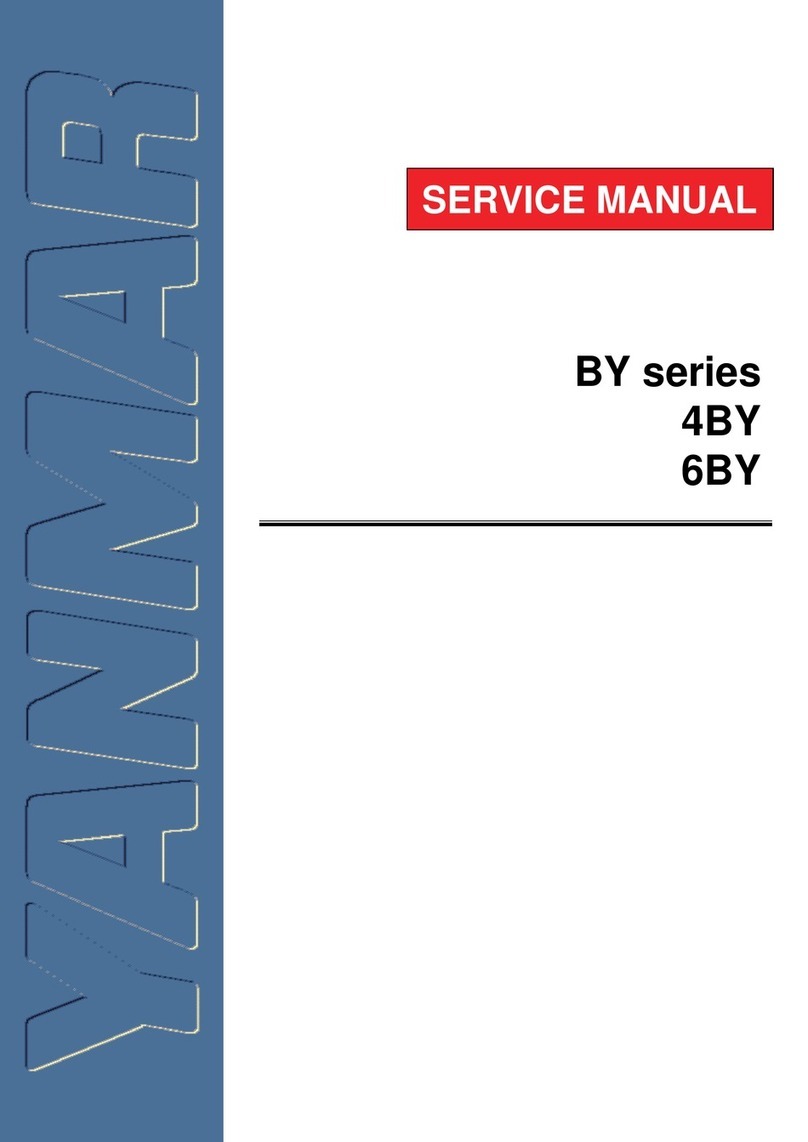
Yanmar
Yanmar BY series Service manual

Studio Technologies
Studio Technologies Dante 5421 user guide
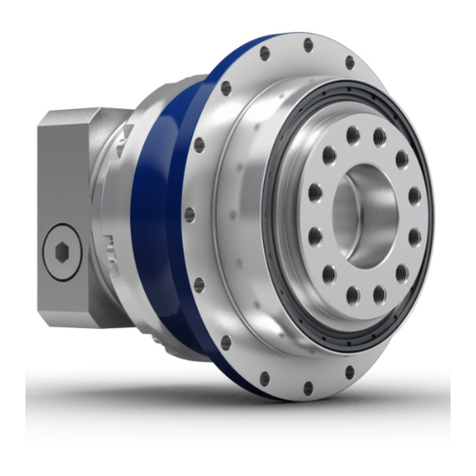
Wittenstein Alpha
Wittenstein Alpha Advanced TP+ Series operating manual
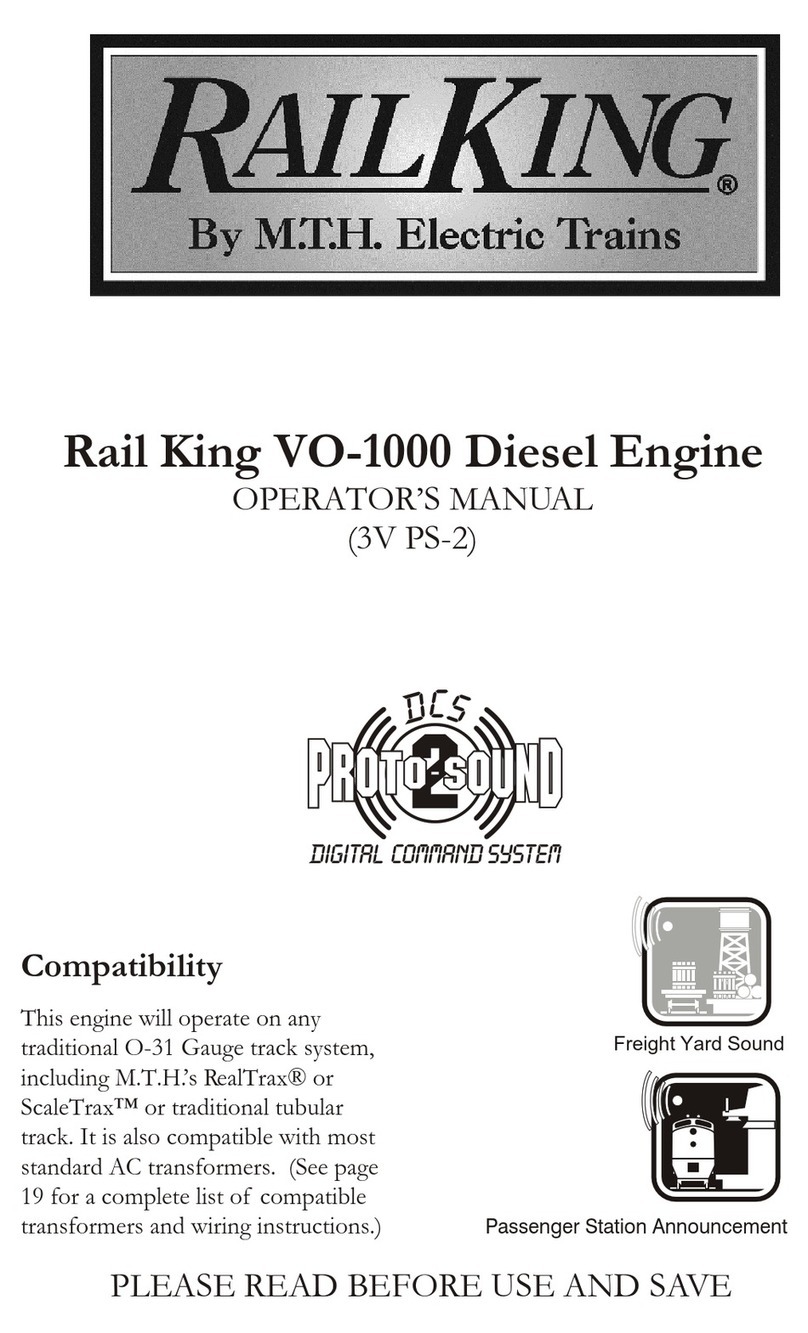
MTHTrains
MTHTrains Rail King VO-1000 Operator's manual

Lincoln industrial
Lincoln industrial 94804 owner's manual
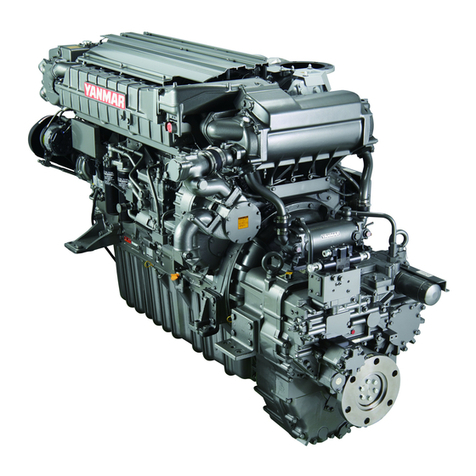
Yanmar
Yanmar 12AYM-WGT Operation manual


